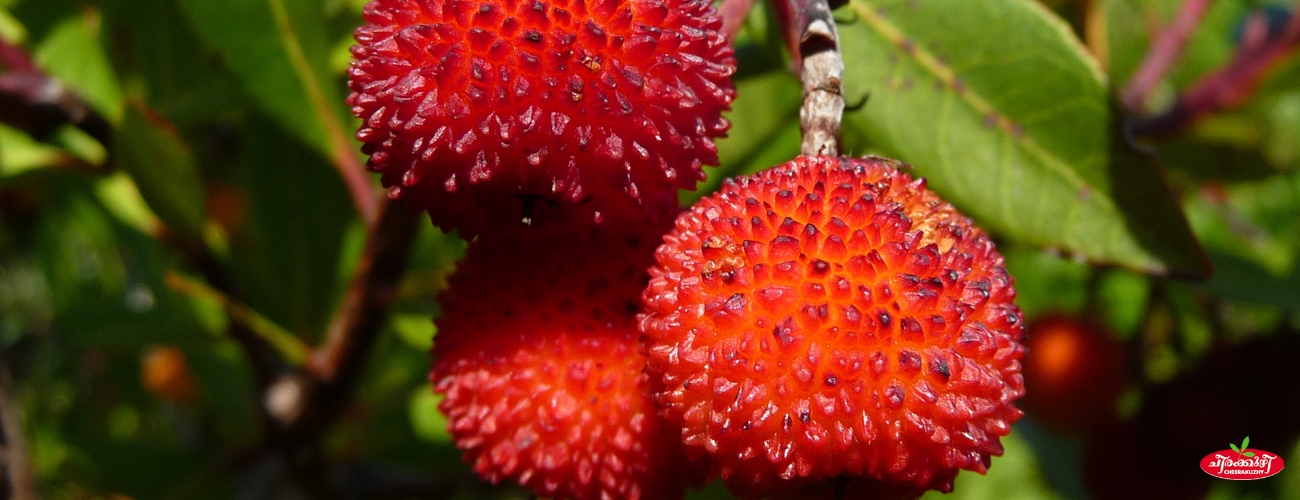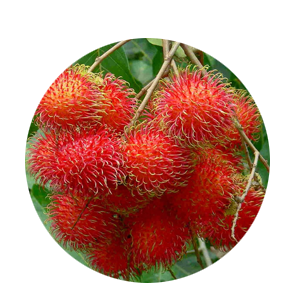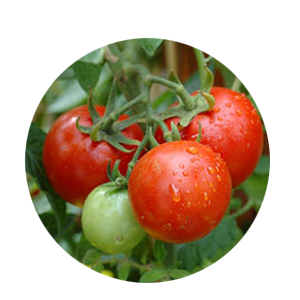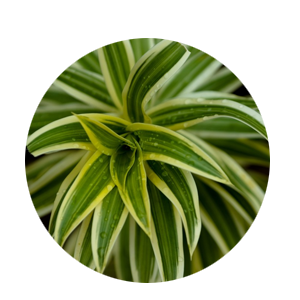Pulasn - Seedling - (8x10 bag)

Item Description
GENERAL INFORMATION ABOUT A PULASAN The pulasan, Nephelium mutabile Blume (family Sapindaceae), is a tropical fruit closely allied to the rambutan and sometimes confused with it. Usually eaten fresh, it is sweeter than the rambutan and lychee, but very rare outside Southeast Asia. The pulasan tree is an ornamental. It attains a height of 10-15 m and has a short trunk to 30-40 cm thick. The branch lets are brown and hairy when young. The fruit is ovoid, 5-7.5 cm long, dark red, with its thick, leathery rind closely set with conical, blunt-tipped tubercles or thick, fleshy, straight spines, which are up to 1 cm long. There may be one or two small, undeveloped fruits nestled close to the stem. Within is the glistening, white or yellowish-white flesh (aril) to 1 cm thick, more or less clinging to the thin, grayish-brown seedcoat (testa) which separates from the seed. The flavour is generally much sweeter than that of the rambutan. The seed is ovoid, oblong or ellipsoid, light brown, somewhat flattened on one side, and 2 to 3.5 cm long. While very similar to rambutan, the fruit lacks the hairy spines. The flesh is very sweet and juicy, and separates easily from the seed, much more easily than the rambutan. In addition, unlike the seed of the rambutan, the seed of the pulasan is readily edible raw. It has a flavour somewhat similar to that of almonds. HELTH BENENIFTS OF PULASAN The fruit of the pulasan contains high levels of antioxidants. Its antioxidant action is attributed to the elevated levels of vitamin C. The antioxidant properties of this fruit are augmented owing to the presence of other chemicals like vitamin C, hydroquinone and pyrogallol. This fruit also contains carotenoids and vitamin E, which contribute to the pulasan fruit’s ability to scavenge free radicals. (The nutritional value per100g of pulasan fruit : Protein content is 0.82g, Calcium is 0.05mg, Carbohydrate - 16.8g, Fat -0.6g, Iron – 0.002mg, Vitamin C – 10.8mg, Ash content is 0.45g and moisture content is about 90.87%.) Some of the Pulasan Health Benefits are: •Weight Loss: It helps you lose excess flab in your body and helps in maintaining a healthy body weight. •Good for Diabetes:Pulasan fruit is used in managing blood sugar level in diabetics. It is beneficial for both types of people who do not have enough insulin or whose cells do not respond to the insulin produced in the cells. •Good Source of Antioxidants: Pulasan is a tropical fruit which is rich in antioxidant properties owing to the presence of vitamin C. Chemicals such as Ascorbic acid, pyrogallol and hydroquinone enhance the antioxidant property of pulasan. Vitamin E and carotenoids are also responsible for the free radical scavenging property of the pulasan fruits. •Skin and Hair Care Benefits: Pulasan makes skin softer and is also used in hair care. It has been proven in a study that a smoothie prepared from carrots and certain underutilized Malaysian tropical fruits such as pulasan can lead to a better complexion, glowing skin and health benefits as well. The oil obtained from the dried seeds and kernel yield about 74.9% of white fats which has a mild aroma and is also good for hair. •Immune Booster: Pulasan is high in vitamin C, which is good for immune system. Pulasan health benefits include healing of wounds and repairing bones and teeth.
Maintanance, Disease Management And Yielding
MAINTANACE OF THE PLANTATION Once a plantation has been established, the work should not be considered finished. It will be necessary, for example, to protect the plantation against weather, fire, insects and fungi, and animals. A variety of cultural treatments also may be required to meet the purpose of the plantation. FERTILIZING For nursery beds for raising rootstocks/seedlings: 20:2:20 N, P2O5 and K2O + micronutrients; Apply to the foliage and soil once in a week by dissolving 1 g/litre water. For polybags used for transplanting rootstocks/seedlings: 20:2:20 N, P2O5 and K2O + micronutrients; Apply 10g once in 2 months. For Field planting 1–4 years: 6:6:6 or 8:8:8 20:2:20 N, P2O5 and K2O + micronutrients; Apply 100 g/tree, thrice a year. Gradually increase to 250g. 5th year onwards: Only N and K; Work out quantity depending on natural soil fertility. Apply twice a year. WATERING AND WEED CONTROL Young pulasan trees should be watered regularly until fully established. In dry western climates, water mature trees deeply at least every one or two weeks. Desert gardeners may have to water more frequently. Mulch the soil around the trees to conserve moisture. Weeding is also very important. Remove all weeds 1.5 meter around the plant. PRUNING AND SHAPE OF TREE Minimum pruning is needed just to remove the dead, diseased, broken branches and suckers. PEST & DISEASE FOR PULASAN TREES Every fruit tree has the future potential for disease and insect damage. Factors such as location and weather will play a part in which issues your tree encounters. If available, disease-resistant trees are the best option for easy care; and for all trees, proper maintenance (such as watering, fertilizing, pruning, spraying, weeding, and fall cleanup) can help keep most insects and diseases at bay. HARVESTING YOUR PULASAN TREE Pulasan trees start bearing fruits from fourth year onwards. It may take up to five months for the fruits to develop into ripe fruits from the onset of fruitset. Harvesting time in South East Asia is during July–September (main season) and December–February. Fruit yield per tree is upto 150 kg. But pulasan trees show a tendency for alternate bearing.
- Propogation Method : Seeds & Bulbs
- Plant Climate : Sub Tropical, Normal, Cool, Tropical
- Plant Height : 3-4 feet
- Plant Weight : 3.5kg
- Plant Polybagsize : 8x10
Related Images
- Botanical Name : Nephelium Mutabile
- Malayalam Name : Pulasan
- English Name : Pulasan
It helps you lose excess flab in your body and helps in maintaining a healthy body weight
Planting Instructions
PLANT THE RIGHT TREE AT RIGHT PLACE Growing space both above and below ground should be considered when selecting a tree to plant. Too often allowances are not made for the increased size of the tree when it matures. Most problems can be avoided by selecting the proper tree species for the available planting space. GENERAL TIPS 1. Plant at least 6 to 10 meter from main overhead utility wires on street or to your home. 2. Plant at least 7 meter from a building. 3. Plant at least 2 meter from sidewalks, driveways, patios and fences. 4. Plant at least 7 to 15 meter from other large trees. 5. Plant at least 7 meter from small trees. 6. Prioritize your tree planting with the sun’s direction to maximize shade by planting on the southwestern and western sides of your home BASIC PARAMETERS TO PLANT A PULASAN TREE 1. Soil : There is little information on the soil requirements of the pulasan but Ochse says it must be constantly moist. He was of the opinion that the richer soil around Bogor contributed to the superior quality of the fruits grown in that area. 2. Planting Distance : For Commercial Plantation:- A spacing of 10 m between plants is recommended for commercial cultivation of pomegranate. For Home Garden: -In a home garden generally we are planting one or two pulasan trees along with other species of fruit plants. So it is better to keep minimum 7 meter distance from other plants to plant a pulasan tree. 3. Pit size : Minimum 60cm width X 60cm Breadth X 60cm depth 4. Sunlight : 100% sunlight is best but can grow up to 50 % shade 5. Watering: During dry weather, initially water the plant once in two days and after one month of planting water every 7 to 10 days during the first year. TEN TIPS FOR PLANTING A PULASAN TREE 1. Dig a hole/pit 3 to 4 times wider than the container (Normally 60cm X 60cm X60cm is recommended). Fill the pit with top fertile soil to allow for proper root growth. Avoid clay type soil to refill the pit. 2. Add 250 gm Rock Phosphate or Born Meal and 3 to 5 kg Cow dung or compost in the top soil of the pit and mix it thoroughly (Thorough mixing of manure with soil is very important because direct contact of manure with the roots of the plant will cause the damage of roots and plant). 3. Make a small hole in the pit and carefully remove the plant from the container/pot or poly bag keeping the soil around the roots intact. Don‘t yank the plant out of the pot or poly bag as this can separate the roots from the tree. Poly bags can be easily removed by cutting it by a knife and pots can be removed easily by hitting slightly at the top edge of the pot. 4. Set the plant in the middle of the hole. Avoid planting the tree too deep. Keep the base of the trunk is slightly above ground level. Using some soil, secure the tree in a straight position, then fill and firmly pack the hole with the original soil, making sure there aren‘t any air pockets. 5. If the plant is Grafted or Budded make sure the grafted or budded portion of the plant is above the soil. Do not allow to touch the grafted or budded portion in the soil as it burns the skin of the plant. 6. Create a water-holding basin around the pit and give the plant a good watering. After the water has soaked in, spread protective mulch 2–4 inches deep in a 3-foot diameter area around the base of the tree, but not touching the trunk. Also provide a stich as a support for the plant, if needed. 7. The soil and mulch around your plant should be kept moist but not soggy. During dry weather, initially water the plant once in two days and after one month of planting water every 7 to 10 days during the first year. 8. Remove any tags and labels from the tree as these will affect the tree as it grows. You may need to prune any broken or dead branches. For Budded or Grafted plants it is very important that do not allow the growth of off shoots under the grafted/budded portion. Allow the growth of budded/grafted scions only. 9. Do not use chemical fertilizer or any other chemicals on your newly planted trees. Such products will kill your young trees. If needed you can add chemical fertilizers in small quantity (generally below 100gm) after two to three months of planting with sufficient irrigation. 10. Do not over water or allow rain water so much that you see standing water in the pit area of the plant. It will damage the plants roots and results the die of your plant.














